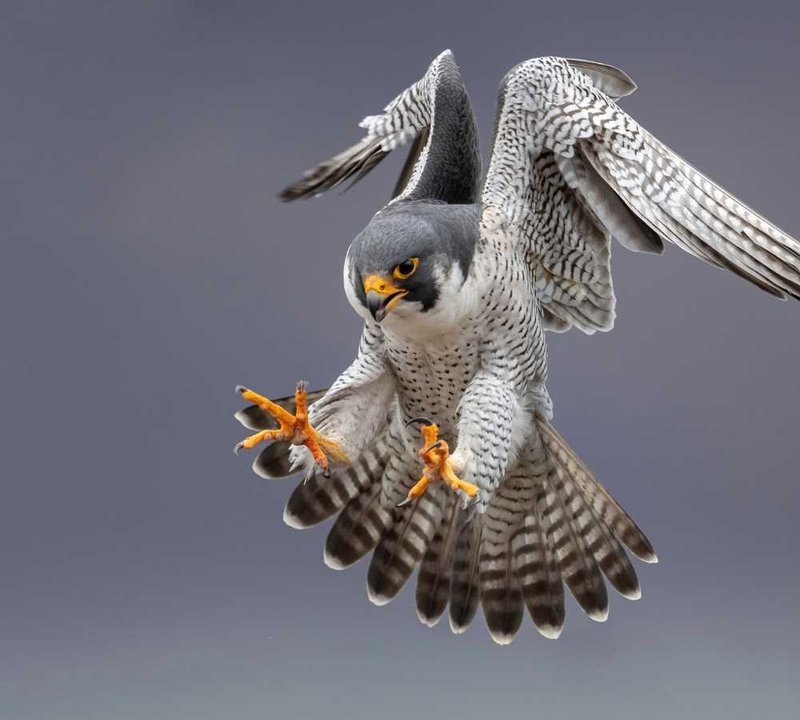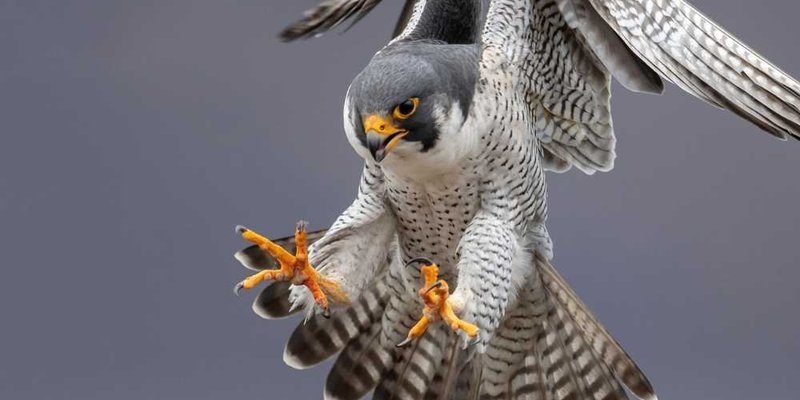
Peregrine falcons are known for their striking blue-gray plumage and their sharp, yellow talons. They’re not just beautiful; they have fascinating behaviors and important roles in their ecosystems. Knowing how to behave around them is crucial—not just for your safety, but for theirs too. In this guide, I’ll walk you through the essential steps to ensure a respectful and memorable encounter with a peregrine falcon.
Understanding the Peregrine Falcon
Before we dive into what to do during an encounter, let’s get to know our feathered friend a little better. The peregrine falcon is found on every continent except Antarctica, thriving in diverse habitats, from urban areas to remote cliffs. They’re known for their incredible vision, allowing them to spot prey from over a mile away. Think of them as the athletic superheroes of the bird world, perfectly adapted to their environments.
Their diet mostly consists of other birds, which they hunt skillfully in the air. Watching a peregrine falcon perform its hunting dive is breathtaking—you can almost feel the rush of wind as they plummet towards their target. But like any wildlife encounter, it’s important to approach these birds with awareness and respect.
Stay Calm and Observe
If you’re lucky enough to spot a peregrine falcon, the first thing to remember is to stay calm. These birds can be quite sensitive to human presence, so it’s essential to maintain a respectful distance. Instead of rushing to take a photo, take a moment to enjoy the experience. Here are a few tips on how to observe without disturbing:
- Find a good vantage point: Position yourself at least a few hundred feet away. This way, you’ll still have a great view without intruding on their space.
- Use binoculars: If you have a pair handy, they’re a fantastic way to see details without getting too close. This is especially important if you spot them nesting.
- Be quiet: Keep your voice low and avoid sudden movements. This helps you blend into the environment, allowing the falcon to act naturally.
It’s like being a respectful guest in their home. Just as you wouldn’t want someone barging into your living room and making a scene, these birds appreciate a bit of space.
Avoid Getting Too Close
You might be wondering, why exactly is it crucial to keep your distance? Peregrine falcons are fiercely protective of their nests, especially during breeding season. If they feel threatened, they might abandon their young or become aggressive, putting everyone at risk. So, here’s how to ensure you’re not an unintentional intruder:
- Know the breeding season: This typically runs from February to June. If you spot a falcon during this time, it’s best to keep your distance and observe from afar.
- Avoid nesting areas: Look for signs that you’re in a nesting zone, such as a pair of falcons or a lot of activity in one spot.
- Watch for warning signs: If the falcon starts to display defensive behaviors—like loud calls or aggressive swoops—back away slowly and calmly.
Remember, the aim here is to appreciate these amazing birds without causing them stress or danger.
Documenting the Encounter
If you’re an avid birdwatcher or simply love to capture memories, documenting your encounter can be a rewarding experience. Just be sure to do it thoughtfully. Here are a few tips for capturing that perfect shot while still being respectful:
- Use a zoom lens: This allows you to take stunning pictures from a distance. You don’t want to risk getting too close and interrupting their behavior.
- Patience is key: Instead of snapping a burst of photos and potentially alarming the falcon, wait for the right moment. Capture one or two great shots rather than a dozen mediocre ones.
- Share responsibly: If you’re sharing photos online, avoid revealing specific locations of nests. This helps protect the falcons from disturbances.
Think of it as being an artist observing a masterpiece. The falcon is your subject, and creating a beautiful image comes from patience and respect.
Educate Yourself and Others
After witnessing a peregrine falcon in the wild, it’s a great opportunity to learn more about them and share that knowledge with others. Education is crucial for the conservation of these magnificent birds. Here’s how you can spread awareness:
- Read up: There are plenty of resources online about peregrine falcons. Books, documentaries, and websites can deepen your understanding.
- Join local birdwatching groups: Engaging with fellow bird enthusiasts can enhance your experience and provide insights into the behaviors of these birds.
- Advocate for conservation: Share what you’ve learned with friends and family. The more people know about the importance of protecting peregrine falcons, the better their chances of survival.
Teaching others about these fascinating creatures is essential for their continued existence. Every bit of awareness can help reduce human impact on their populations.
When to Seek Professional Help
Unfortunately, sometimes peregrine falcons may need assistance. If you encounter a falcon that seems injured or in distress, it’s important to know when to step in and seek help. Here’s what to do:
- Assess the situation: If the bird is on the ground and unable to fly or appears to be in danger, it might need assistance.
- Contact a wildlife rescue: Reach out to local wildlife authorities or rehabilitation centers. They can provide the best advice on what to do next.
- Stay at a safe distance: Until help arrives, maintain distance to avoid causing the falcon further stress.
While it’s tempting to try to help directly, it’s always best to let professionals handle wildlife situations to ensure both your safety and the falcon’s well-being.
Encountering a peregrine falcon in the wild can be a breathtaking experience. By understanding how to behave respectfully, you not only get to enjoy watching these incredible birds but also contribute to their conservation. Whether you’re observing from a distance, capturing photos, or spreading the word, every little action matters.
So next time you’re out in nature and see a flash of blue-gray soaring overhead, remember: stay calm, respect their space, and cherish that unique connection to wildlife. It’s a beautiful world out there, especially when you share it with such magnificent creatures!

